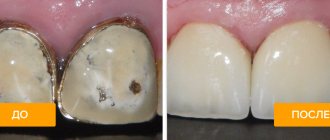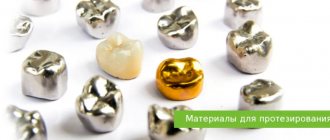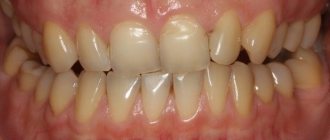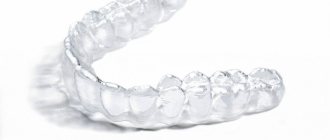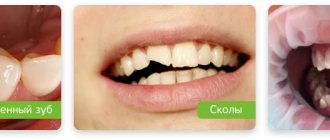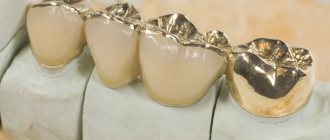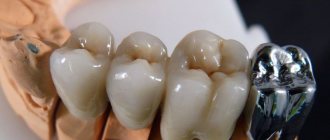Every person goes to the dentist at least once in his life. An unbalanced diet, genetic predisposition, lack of minerals, lack of proper hygiene, smoking and other factors negatively affect the condition of teeth, leading to rapid destruction of enamel and the appearance of caries. Only timely treatment will preserve oral health and a beautiful smile. The most common option for dental care is placing a filling on a damaged tooth. What are the materials and how is the procedure?
In what cases is it necessary to install a filling?
The installation of restorative material is carried out not only in the treatment of carious lesions. The procedure is also performed when:
- presence of chips and cracks;
- elimination of consequences after mechanical damage;
- intense loss of hard tissues, leading to almost complete wear of the upper part of the teeth (for example, due to involuntary grinding of the jaws).
It is worth noting that any dental clinic performs filling only in cases where the destruction of the coronal part is insignificant. If the surface of the tooth is damaged by more than a third, it is replaced with an artificial substitute - a prosthesis.
The use of modern materials helps restore the beauty of the smile and chewing function, and also prevents further destruction of the mineralized coating.
Manufacturing materials
When choosing a composition for temporary closure of a carious cavity, the following are taken into account:
- size of the lesion;
- diagnosis;
- expected duration of treatment;
- the patient is allergic to medications.
Most often, doctors use the following intermediate-acting filling solutions:
- From kaolin and zinc sulfate. The mixture allows you to partially restore dentin - the hard crown part located under the enamel.
- Polycarboxylate. Low-toxic cement used to fix a crown, inlay or dental bridge. Can act as an insulating gasket when installing amalgam and cement elements.
- Karyosan. Zinc oxyeugenol cement, formed by zinc oxide and eugenol. Shows analgesic and antiseptic properties. Used to disinfect canals and relieve inflammation.
- Vinoxol. Includes zinc oxide and a solution of polystyrene in guaiacol. High-quality artificial dentin that can withstand chewing load for one to two months.
- Glass ionomer cement. Suitable if you need to fix dentures for a short period of time.
What types of fillings are there?
Depending on the period of use, temporary and permanent fillings are distinguished. The first ones are placed during treatment. For example, they cover a tooth for a while in order to understand whether the nerve is affected by caries or not. A temporary filling is also used to secure medications placed in a diseased tooth, or to secure arsenic after depulpation. After two weeks, temporary materials are replaced with permanent ones. The latter can last for years.
In modern dentistry, the following types of fillings are distinguished:
- Cement fillings are a budget option. They are difficult to grind, look unnatural and can cause destruction of the teeth they interact with.
- Metal (almagamic). They are made from an alloy of silver and copper, are characterized by increased strength, but also stand out against the background of the rest of the jaw. Often, fillings of this type are installed on teeth located further than the incisors.
- Composite fillings. They have a paste-like consistency and are applied in layers, so working with them does not cause much difficulty. Special ultraviolet light is used to fix composite materials. The variety of the palette allows you to choose a shade that will not differ from the native enamel, which is why composites are widely used for the restoration of anterior teeth.
- Ceramic fillings. In appearance and composition, they are as close as possible to the natural coating of teeth. Their production takes some time, so the fixation of the material is carried out in several stages. Ceramics are resistant to temperature changes. Its main advantage is also aesthetics.
Why use it - indications for use
Dentists install temporary filling compounds for:
- Advanced caries. If the cavity is very deep, after it has been cleansed of the affected tissue, a medicinal solution is applied to make the layer between the open area of the crown and the dentin as strong as possible.
- Progressive acute pulpitis. Requires depulpation. For this purpose, a medicine is placed into the “hole” that destroys the nerve. It is covered with a protective insulating compound, which will be replaced in the future.
- Periodontitis. With this disease, progressive inflammation in the root area is observed. To stop it, the dentist puts an antiseptic medicine inside the canals. To securely fix it, a hardening gel is placed on top.
- Complicated carious process. Sometimes dentists are faced with a non-standard course of a diagnosed disease. Then, in order to select an effective treatment, they decide to observe the dynamics. In this case, there is no point in installing a permanent element - it will most likely have to be removed soon. Therefore, preference is given to the temporary.
- Manufacturing of dental crowns and bridges. After impressions are taken, it is important to protect the sawn parts of the unit. To do this, use a temporary filling or crown.
Sometimes non-permanent filling is used during the sanitation of dental canals. This is necessary to prevent recurrence of the treated disease. The specialist thoroughly cleans all intradental areas, then applies an antiseptic and closes it on top for a certain period of time. During repeated appointments, he uses permanent hardening mixtures.
What types of fillings are better?
Many dentists recommend installing fillings made of light-curing composite. They are characterized by increased strength and durability, and look natural. Composite fillings are suitable for filling cavities in distant teeth and restoring carious cavities, as well as for treating erosions of hard tissues. Their service life is 5 years.
Glass ionomer cement, which is a hybrid of acrylic and silicate components, is also considered a good choice for filling. Glass ionomer combines well with natural coatings and other established types of fillings; it is suitable for treating destructive processes of the tooth, filling the anatomical space under the roots, and preparing the cavity for further orthopedic manipulations.
How is the filling installed?
The fixing of the restoration material always follows the same pattern:
- First, the doctor injects into the tissues located around the damaged area.
- When the medicine begins to act, the specialist cleans the cavity from the remains of dead tissue, darkened mineralized parts and dentin, and gives it the desired shape and depth.
- The doctor then examines the pulp. If the connective tissue is not damaged, the prepared area is treated with an antiseptic. If the pulp is in a state of inflammation, then the dentist removes it from the tooth cavity and then fills the canals.
- After the above manipulations, the cavity is dried. Then special antimicrobial and insulating gaskets are placed in it.
- At the final stage, filling is carried out. At the end of the operation, the installed material is ground for comfortable closure of the jaws and polished.
After teeth filling
In some cases, after applying a filling, the sensitivity of the sealed tooth to external factors may increase: it may “ache” unpleasantly with any temperature change or when air enters. This most often happens when using composite materials. If the tooth remains sensitive two weeks after treatment, you should immediately consult a doctor.
A common cause of pain that occurs immediately after the anesthetic wears off can also be an excessive filling height. In this case, it should be reduced by the dentist.
The application of a filling is always accompanied by final grinding, during which the edges may remain sharp. Due to the action of the injection, this is often not felt immediately. If you notice protruding edges after the anesthetic has worn off, you should contact a dental clinic as soon as possible and make an appointment to straighten the tooth surface.
Precautionary measures
In order not to bitterly regret the time spent in the dentist’s office, after installing a temporary filling, it is highly advisable to follow the following simple rules:
- When brushing your teeth, especially if the filling has been installed for a fairly long period of time, use a brush with soft bristles. Otherwise, oral care is carried out as usual: brushing 2 times a day, you can use rinses.
- Try not to chew on the affected side of your mouth, and temporarily avoid sticky toffees, chewing gum, hard nuts, bones and candy. Do not put pressure on the tooth while testing the strength of the filling.
- Within 1 day after installation, it is not advisable to eat beets, drink coffee, tea, or red wine, as the filling may become stained.
- Toothache will be relieved by rinsing with chamomile and sage decoctions, an aqueous solution with sea salt and soda. As for painkillers, it is better to consult a doctor. Aspirin should be avoided: it is ineffective against toothache, and in large quantities it harms the stomach.
- The most pressing question that arises after a temporary filling has been installed is: when can you eat? Modern reflective fillings harden almost instantly, meaning you can eat food within 20 minutes. But this is theoretical, but in practice it is better to clarify this point with the dentist. In most cases, you can safely eat and drink 2-3 hours after filling.
It is important to remember that the highest quality temporary filling is not a suitable replacement for a permanent one, so you should not delay your visit to the dental office.
Rules for caring for fillings
Despite the fact that many fillings can theoretically last for years, it is recommended to change the materials every 10-12 years. It is recommended to visit a doctor once every six months for hygiene measures. You should also make an appointment with a doctor if:
- short-term pain in the treated area;
- detection of cracks;
- presence of a chip in the filling material.
The dentist can easily replace a bad filling with a new one.
If there is a large amount of restoration material in the cavity, you can ask the specialist to prescribe a gel with a high fluoride content. Its regular application will help strengthen the hard surface and prevent caries from forming again. Filled teeth may also be coated with fluoride varnish during the examination.
At home, it is recommended to use mouth rinses. With their help, you can significantly reduce the number of microbes that cause caries.
Summarizing the above, I would like to note that filling is a serious procedure. To prevent dental treatment under anesthesia from ending with repeated fillings and a double waste of time and money, you should seek help only from reliable, experienced specialists.
Cost of ceramic inlays
Many patients are alarmed that the price of ceramics exceeds the price of composites. But you can determine the benefits of installing ceramics:
- you won’t have to change the filling every two years;
- sudden expenses for installing an implant or crown in the future are not predicted;
- saving time on visiting a doctor.
We can conclude that ceramics is a reliable, durable material that will look much more attractive and will not cause discomfort.
Everyone makes their own decisions. But when it comes to dental health, you should give preference to quality and durability. If you want to maintain healthy teeth and not worry about constantly changing fillings, it is better to stick with ceramic inlays.
